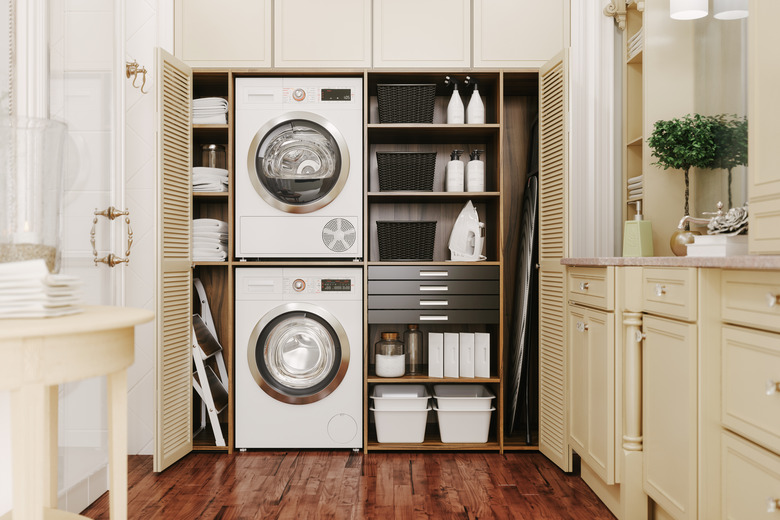What Size Washer And Dryer Do I Need?
The convenience of having a washer and dryer in your home is undeniable, but size is important to make your appliances efficient. Units that are too small make it difficult to keep up with your laundry, while oversize appliances use excess power and take up more space than necessary. When it's time to replace your washer and dryer, knowing what size you need makes the purchase less stressful.
Tip
The size of washer and dryer you need depends largely on your laundry demands. Washer capacity usually ranges from 1.5 cubic feet in compact models to 6 cubic feet in large-capacity models.
Consider Appliance Capacity
The capacity listed for washers and dryers describes how much space is inside the unit and impacts how much laundry you can fit inside. Larger washers and dryers give you more flexibility, but they might use more power and water than smaller units, and they'll take up more space in your laundry room. They also tend to cost more, so this can be an issue if your budget is limited.
You can think of washers in terms of small, medium, and large capacity. Different manufacturers might vary slightly on the capacity size that they consider to be small, medium, or large. Thinking about the size of your family in those terms can give you a rough idea of what size you need. Dryers always have a larger capacity than washing machines.
A compact washer is generally anything that's 3.4 cubic feet or smaller and works best for small families with very little laundry. You might also need a compact unit if you have a small laundry space. A compact dryer is typically about 2 to 4 cubic feet.
A medium-capacity washer is suitable for average families. with capacities typically ranging from 3.5 to 4.4 cubic feet. While you can fit most bedding in these washers, some larger, bulkier items might not fit as well. A corresponding dryer is roughly 4 to 7 cubic feet.
If your budget allows, moving up to a large-capacity unit can come in handy for large families with lots of laundry. They're also convenient for washing bulky items. They include units with 4.5 cubic feet and more of space inside. A compatible dryer has a capacity of 7 cubic feet or more.
Consider Appliance Dimensions
Capacity is important for finding a washer and dryer that fit your clothes well, but the appliances also need to fit into your available space. Take measurements of the laundry room area, taking into consideration the width, depth, and height of the available space. Keep in mind that you need to leave 1 to 3 inches on the sides for air circulation and 4 to 6 inches behind the units for the cords, vents, and other hookups. You'll also need enough space to fully lift or swing the doors open.
Measure your doors as well to ensure you can get the washer and dryer into your home. Taking the door off the hinges can give you a little extra space. Older homes sometimes have narrow doorways. Compare those measurements to washer and dryer dimensions for the models you're considering to choose a set that fits well.
Evaluate Your Laundry Needs
Consider factors such as how many people are in your family and how much laundry you generate. Larger-capacity washers let you tackle laundry faster since you can wash larger loads. For example, if you have kids who have sports practices multiple times per week, you'll benefit from a larger washer and dryer to handle all the extra laundry.
Consider bulky items you might wash regularly, such as king-size comforters or large sofa slip covers. These items better fit inside larger washers and dryers. They can get cleaner in a large washer, and they dry faster in a large dryer.
